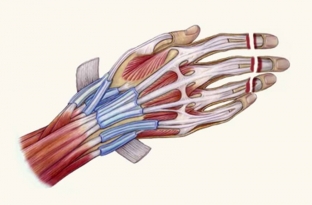Traumatic lesions of the upper and lower extremities are currently not uncommon. In the world around us, there are a huge number of traumatic agents that can cause serious damage. Plastic surgeons often in their practice have to deal with the need to engraft lost limbs – hands, feet, fingers and toes. If earlier it seemed like a fantasy, today it is quite possible to “sew” severed limb and restore its function. Such surgical interventions are called limb replantation, and estet-portal.com talks about their features today.
Peculiarities of replantation of severed limbs
Replantation is a surgical intervention to engraft completely severed limb segments.
The concept of "severance" differs from "amputation": in the first case, the limb is disconnected from the body as a result of injury, in the second – after surgery. Depending on the nature of the damage, the detachment of the segment may be complete or incomplete. With the complete detachment of the limb, its blood supply is completely interrupted, with incomplete – partially preserved. If it is additionally necessary to restore the vessels in case of incomplete detachment of the segment with uncompensated ischemia – this operation is called revascularization.
Replantation:
- indications and contraindications for limb replantation;
- features of transportation of severed limb segments;
- surgical technique for replantation of severed limbs.
Indications and contraindications for limb replantation
There are strict indications and contraindications for replantation and revascularization of lost limbs. The indications for replantation are as follows:
- severing of large limb segments;
- severing of the first finger of the hand;
- multiple amputations of fingers;
- severance of fingers in children.
In such situations, replantation is indicated even in the presence of relative contraindications. Absolute contraindications include:
- long periods of lack of oxygen in the detached tissues;
- presence of other severe injuries or concomitant chronic diseases;
- extensive damage to the severed segment, when the possibility of its engraftment is doubtful, and the restoration of function is unlikely.
Peculiarities of transportation of severed limb segments
In replantation, the correct transportation of the lost segment plays an important role. It must be dried and placed in a sterile bag, which is tied up and placed in a large bag filled with water and ice. The temperature of the detached tissues should be kept at 4-5°C. It is also important to avoid contact of the lost segment with water, which can lead to osmotic disturbances. The terms of cold anoxia for the fingers are 24 hours, for the hand – up to 12 hours, and 6-8 hours for the forearm, depending on the level of its separation. Segments transported in this way are in most cases suitable for replantation.

Surgical technique for replantation of severed limbs
Surgical technique of replantation in most cases is carried out according to the following scheme:
- Nerves and vessels are identified and marked first.
- Next, the bone fragments are shortened and aligned.
- Osteosynthesis is in progress.
- All sutures are applied in the following sequence: flexor tendon, sheath tendon, extensor tendon, artery, nerve, and vein suture.
- Skin sutures are applied last.
The first two stages of surgery are carried out simultaneously by two teams of surgeons. Replantation should be performed only in specialized centers, as such surgical interventions require special equipment.







Add a comment